Despite Saturday’s poor band conditions on 40m, I was saved from a disappointing activation by the huge number of Bunkerfest stations on the air. But while I was benefitting from Bunkerfest, there was no bunker near my summit, so I wasn’t really contributing. Of course I couldn’t let that stand, so the following day, it was time to head out to a bunker.
I had wanted to activate the Huff Duff for Bunkers on the Air for a while, and patiently waited for my chance to get it added to the system. At last, it went live a few days before Bunkerfest—so how could I resist being its first activator this weekend?
With my FT-891 and inverted-V dipole packed, and my logging assistant coming to join me for a nerdy Father’s Day adventure, we headed out to Ibsley.
But before we got there, we had to take a detour. For revenge.
1310-1410Z: Blashford Lakes
Earlier this week, I had attempted a quick afternoon activation at GB-4520 Blashford Lakes using the QRP rig and end-fed random wire antenna. This was largely to test whether the addition of a metre of coax and a 9:1 unun would move the electromagnetic field further away from the microphone, and reduce the problems I’d been having with poor audio.
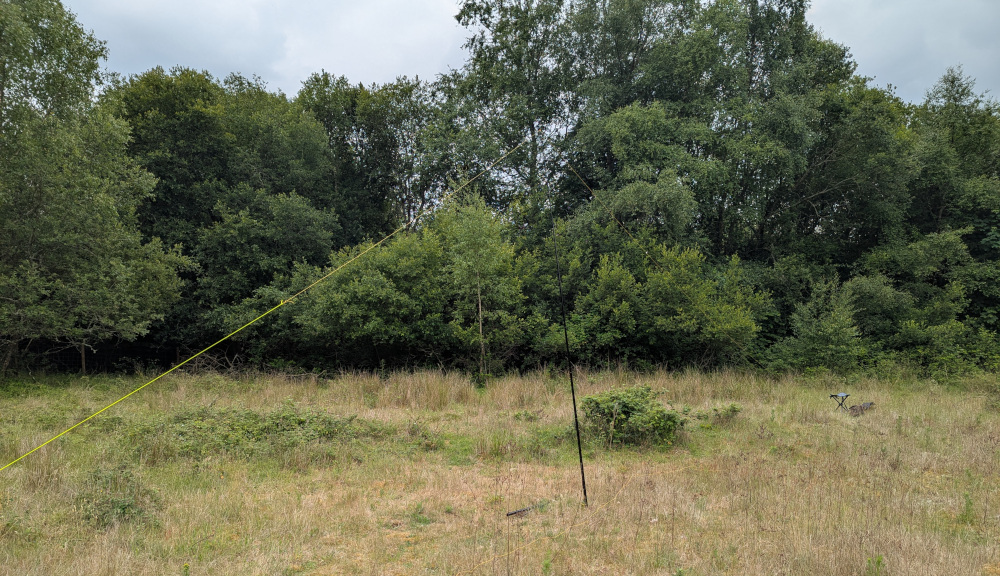 The site of my previous activation attempt
The site of my previous activation attempt
Sadly, whether due to the reduced efficiency of the antenna, poor band conditions, poor planning, or just poor luck, that activation ended in a failure. A Monday afternoon, with limited time before the car park closed, was not the ideal scenario for the slow pace of a QRP activation, and I was forced to pack up and head out with only four in the log.
Unfortunately, this feature had been requested in my “New Parks” web app only a few weeks before:
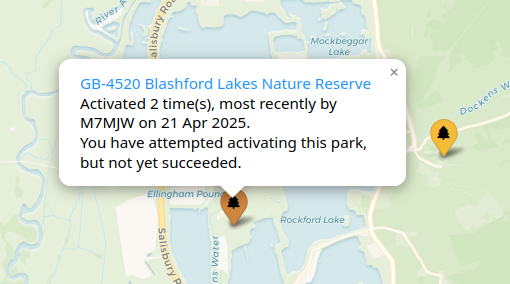 My failed activation displayed in the New Parks tool
My failed activation displayed in the New Parks tool
I couldn’t have a brown stain on my map for long. With Blashford being so close to Ibsley, and the 100W radio in the bag, this would be the ideal time to fix it. We would park up, quickly deploy the vertical antenna, grab 10 QSOs, and go.
Half an hour later, I was starting to regret picking the 20m band.
Band conditions, it turned out, were terrible. The QSOs were few and far between, always just far enough apart that I considered running back to the car for the 40m dipole, but just close enough that I didn’t go through with it.
All told, it took 38 minutes to make it to 10 QSOs. A bonus 11th followed right after, but at that point we were done with Blashford Lakes and packing up. We were behind schedule, and leaving these cursed POTA activations behind us.
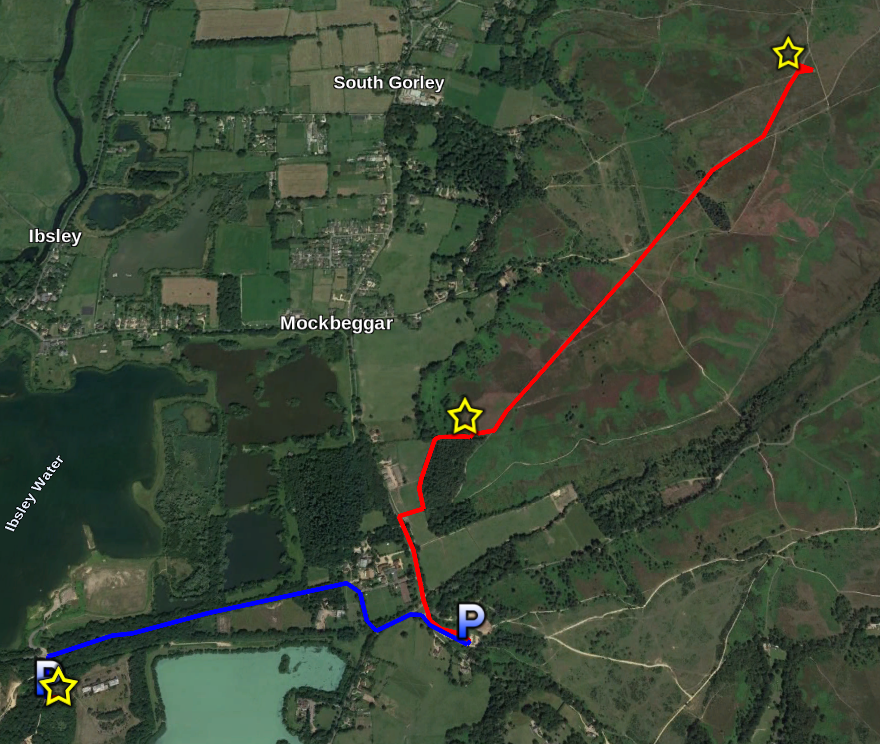 Our route between the three activation spots
Our route between the three activation spots
1440-1510Z: RAF Ibsley Battle Command HQ
In the interests of saving time, we moved the car from Blashford Lakes down to Rockford Sandpit. On foot, we then crossed over the ford at Moyles Court past dozens of kids playing in the stream, bought ice creams from the van, and headed up towards Ibsley Common for our second activation spot.
That stream brings back memories of many a childhood visit, and it’s nice to know it remains as popular today as it ever was.
 It was a lot busier today than it seems to have been when this photo was taken, nearly 40 years ago!
It was a lot busier today than it seems to have been when this photo was taken, nearly 40 years ago!
The whole western end of the common was once RAF Ibsley, built from 1940-1 for use by the Royal Air Force, then like many airfields it was turned over to the USAAF in the later stages of the war. Post-war, the airfield was briefly a motor-racing venue, then a quarry, before being returned to the natural state it’s in today.
On our way to the Huff Duff, we passed through the AZ for B/G-1724 Airfield Battle HQ - Ibsley and so decided to stop there for a brief activation of that bunker as well. The area also qualifies for POTA as GB-4518 New Forest Northern Commons. The actual headquarters does still seem to exist, but we weren’t sure how far into some quite dense woodland we would have to trek to reach it. Since we were already behind schedule, we chose to activate at the first bit of bunker-like structure we found. It didn’t take long to spot two bits of concrete sewer pipe, formerly the foundations for a light anti-aircraft gun. Not the most glamorous of “bunkers”, but definitely part of Ibsley Airfield and well within the AZ for the Command HQ. Plus, this spot on the edge of the hill had a great view back over Blashford Lakes.
 Our station location for activation number two
Our station location for activation number two
We set up the 40m inverted-V dipole on the heath and sat on the bench next to the former gun foundations, and quickly got calling CQ. And what a difference it was from Blashford Lakes just an hour ago. My poor assistant, far from bored this time, was kept on his toes frantically copying down callsigns through the next half-hour of pile-up. There were only a few bunker stations on the air at that point, and so all the hunters seemed to descend on us immediately!
However, time was ticking on—the Huff Duff was still 2km away, and we had a long walk back the way we’d come waiting for us after that. With 33 in the log in 25 minutes, we took advantage of a brief pause in the pile-up to announce that we were done, and moving on to the next bunker.
1600-1700Z: RAF Ibsley HF-DF Station
The High Frequency Direction-Finding Station, the “Huff Duff”, sits by itself in the middle of about 10,000 acres of wild heather, gorse and fern. From the previous spot you head north-east, following a trail, past a wide watering-hole for the cows and horses, then on past a small copse of trees, up to the crest of the hill with its trig point marker. Then on, and on. Another five minutes later, the low red-brick structure of the Huff Duff will finally hove into view.
There is nothing here, save a few cantering horses, to disturb the peace. No-one comes here unless they know what they’re looking for.
We knew what we were looking for.
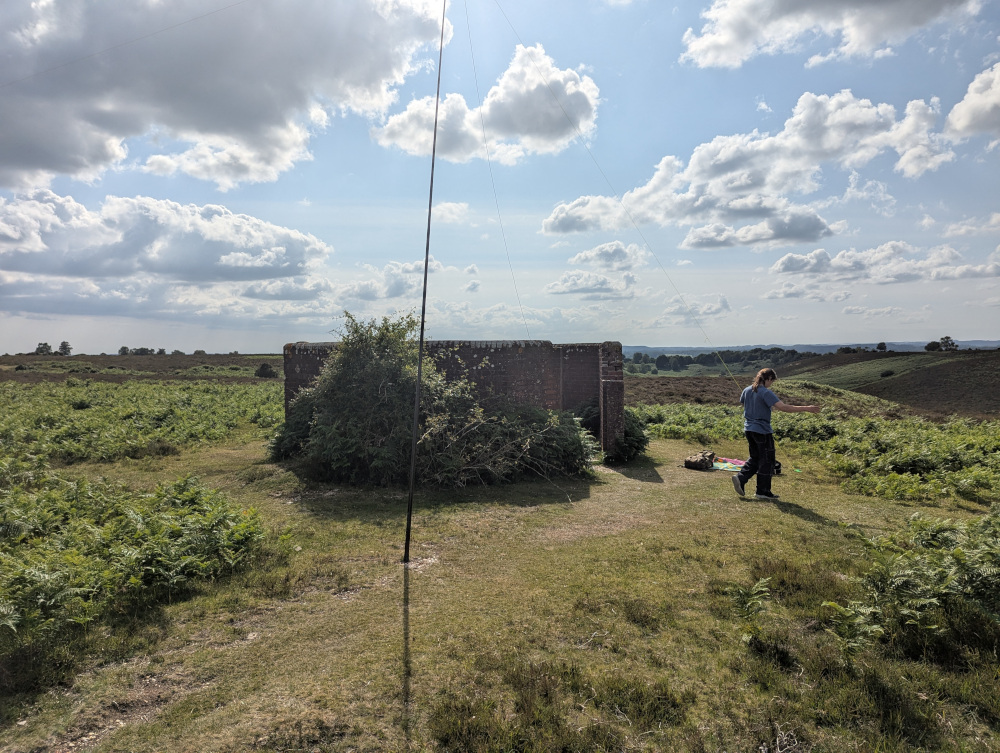 Setting up for the Huff Duff activation
Setting up for the Huff Duff activation
I’d waited a long time for this one, probably four months from first thinking I’d like to activate it as a bunker, through being invited to the UKBOTA WhatsApp group, patiently waiting for the chance to add a new bunker, and supplying the details. I think it’s special, not just as a piece of history, but as a piece of radio history, and I hope we did it justice for its first ever Bunkers on the Air activation.
Back in the Second World War, this station would have been used to locate aircraft flying over the channel using HF radio, a still a relatively new technology at the time. While only the brick outer wall remains now, it once contained a wooden tower, on the top of which stood a rotatable antenna array. This allowed the soldiers stationed here to calculate a bearing to a squadron of allied aircraft which carried an HF radio transponder. The bearing information was then sent back to a command station where it could be combined with reports from other HF-DF stations along the coast to triangulate the aircraft’s location.
We couldn’t promise any direction-finding capability with our single inverted-V dipole, but in terms of HF radio communication, it was a great success. Despite an initial struggle to get spotted, the Bunkerfest crowd soon caught up with us again, and we powered through 45 minutes of pile-up with 47 QSOs the final total in the log.
As with the previous bunker, we could probably have carried on for much longer if time had allowed, but a brief break in QSOs allowed us to announce our intentions and take a couple more callers before shutting down the station.
 The picnic blanket returns for our two-person activation
The picnic blanket returns for our two-person activation
Before departing, we headed over to the only other structure at the site, around 100m to the east. This was once the building where the soldiers lived while manning the HF-DF station, now only foundations, plus the bunker in which they would have sheltered from attack. The bunker is still accessible, although very small inside, and even has a sign board telling its story and that of the ginger tom cat that kept the troops company.
 The shelter at the HF-DF station accomodation building
The shelter at the HF-DF station accomodation building
With the site fully explored, it was time to turn our sights back southward. A long walk awaited us, back to the ford now strangely empty and quiet. Only a few caravanners were still around, cooking their dinner at the end of a long, warm day out on the heath.
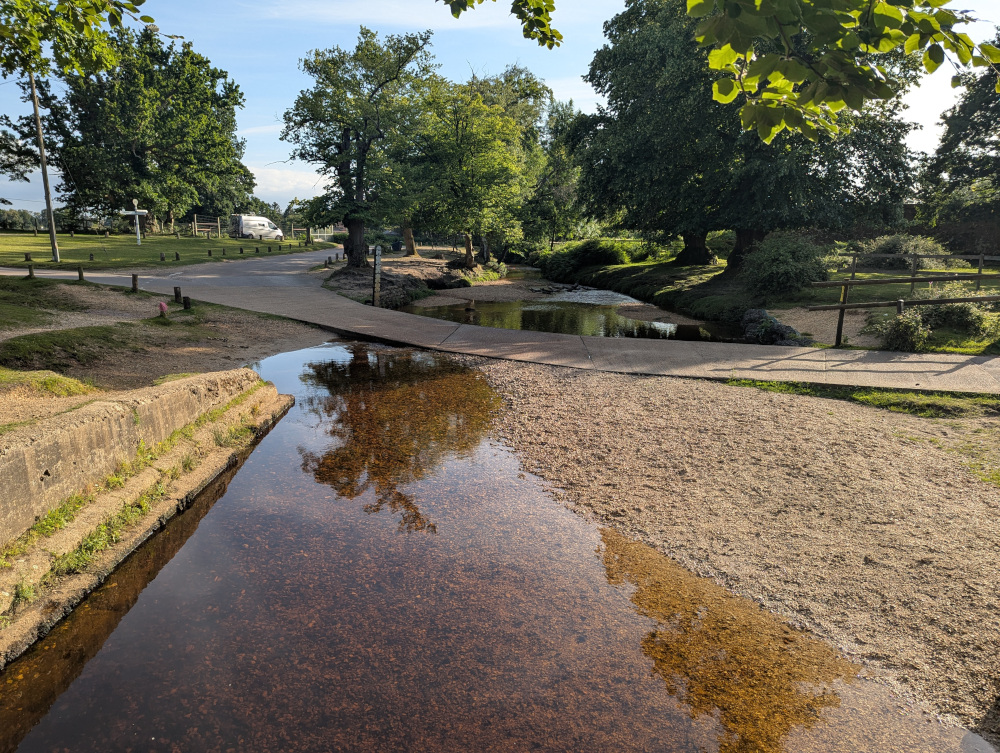 The ford at Moyles Court
The ford at Moyles Court
Many thanks to all our Bunkerfest contacts today. See you on the air next time!
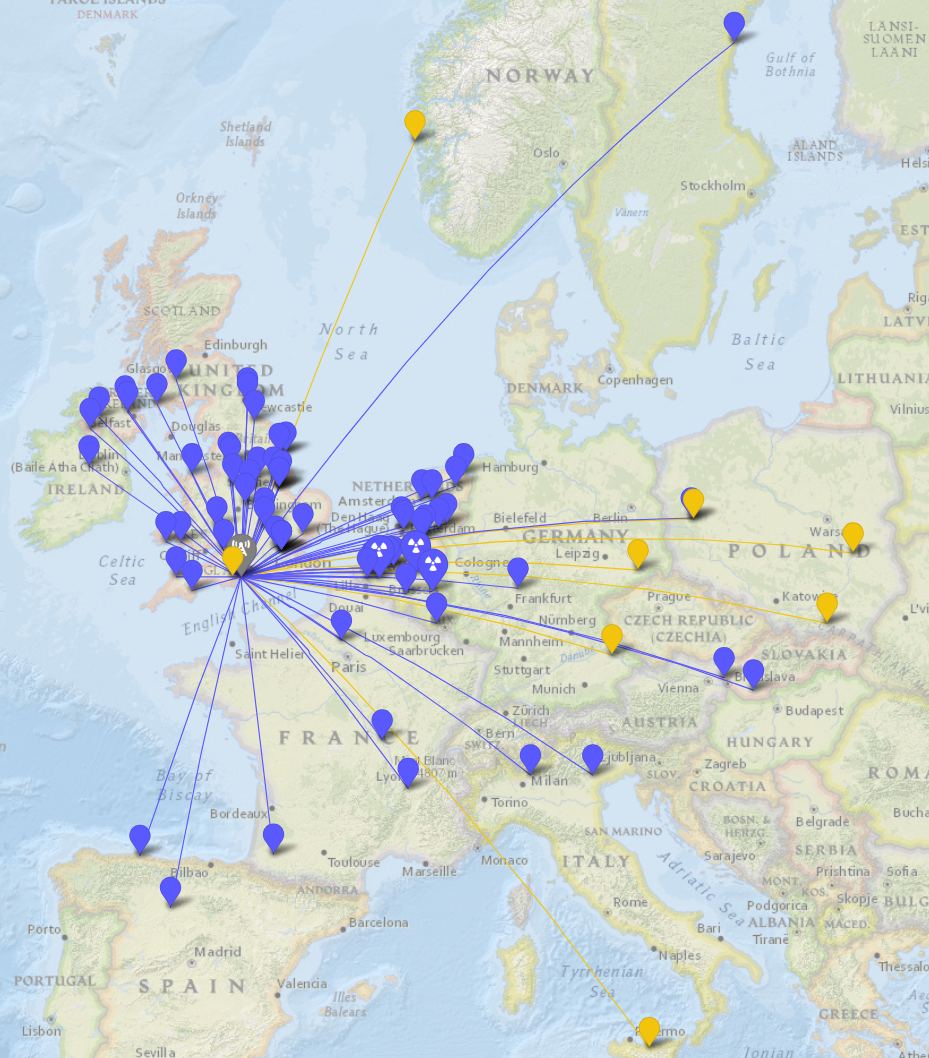 QSO map from Bunkerfest 2025 (plus our Blashford Lakes “revenge” activation)
QSO map from Bunkerfest 2025 (plus our Blashford Lakes “revenge” activation)
Comments